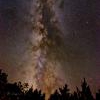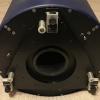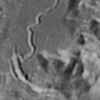I'm about to embark on a large challenge for which I am ill-prepared, and I can use all the help I can get.
I have landed a top quality 4x5 aerial camera. It has no adjustments beyond exposure. That is, the focused is fixed at infinity, and it has none of the "usual" 4x5 camera movements. It is, basically, a brick with a lens.
Oh, and a fine lens it is. A Schneider convertible, at 150mm f/5.6 and 265mm f/12 (I think), depending on how you configure it. This is a sharp, contrasty, fast large-format lens. Mounted in a brick.
OK. So. I intend to lash this puppy to a motorized Celestron CG5 mount to take some, um, shall we say "very long exposure" wide-field astronomical photographs of (one would hope) top quality. I have all the incidental necessaries, like film holders, due to my alternative expensive habit, which is large-format photography.
But (and unlike my own, it's a very big but): I am a brash beginner in this. I have never tried astrophotography of any kind, much less of the large-format kind.
I can foresee so many issues. Some I am confident about managing (like, say, polar alignment). Others I'm not so sure about.
It would seem that reciprocity failure would be a huge issue. Likewise (and partly due to reciprocity), film choice must be crucial. There must be scads of other "gotcha"s lurking about.
And I'm a neophyte, a newbie, a sophomore with Ph.D. dreams.
First: Has anyone you know ever tried 4x5 astrophotography? Have you? If so, that person (you?) is the person I need as a mentor. If not ... dang. Well, if not, whatever advice you film astrophotographers have to offer will be gratefully accepted.
And really, how many times in your life is your advice really welcome?
Tim
Colorado



























